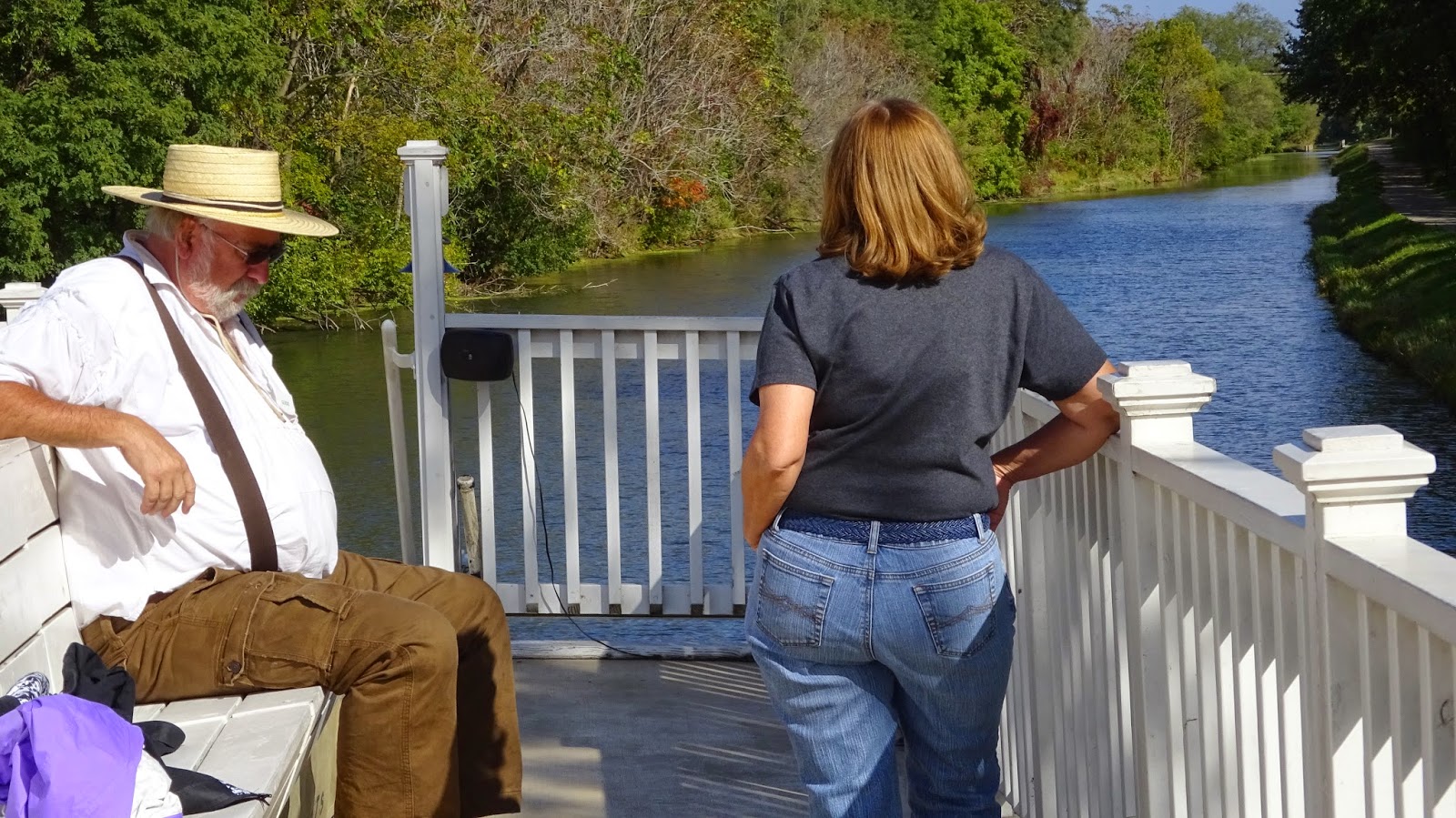With this 96 mile link the center of trade in the Midwest was shifted from St Louis to Chicago.
Passenger service through the 15 locks and five aqueducts was only viable for about 5 years though until the railroad was built pretty much right next to it.
Cargo carrying, mostly grain, wood, and rocks, lasted until about 1890. They upgraded from mules pulling barges to steam-driven boats around 1870 and the most amount of cargo moved was in 1882.
After 1900 commercial traffic stopped and recreation usage started and then the canal was closed around 1933.
We had explored the canal earlier in the week with a walk on our day off.
The canal today is mostly filled with green slimy water and vegetation. The bike/walking/running trail follows the old tow paths next to the canal.
There are many, many places to access the pathway and it seems to be well maintained.
Our adventure today was to go to the end of the canal, La Salle, and experience being in a canal boat towed by a mule along the canal - just like in the old days.
We drove along the roads closest to the canal and stopped at access points to walk along the path and to view old mule barns, old locks, toll houses, replica boats, and lock master houses.
Eventually we made it to La Salle, bought our tickets, and got down to the water in time to see a boat and mule coming back to the landing.
30 minutes later it was our turn to board and we were the only passengers on the boat!
The crew consisted of a pilot, a linesman, a mule handler, and a storyteller.
The boat was a replica of what the boats were like 150 years ago and had a small, unseen motor for assistance for safety sake.
The storyteller followed us around the boat as we took pictures and he told us the tale of the canal and the cities along the route.
On our way back home we located one of the locks on the Illinois River that took over for the I&M Canal and we watched as a huge 12 barge tow was moved through the lock until the visitor's center closed at 5pm.











No comments:
Post a Comment